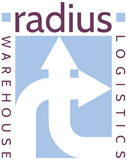How Healthcare Logistics and Supply Chain Management Can Improve Patient Care
In today’s healthcare landscape, providers are under increasing pressure to improve patient outcomes while reducing costs.
One way to achieve this goal is to optimise your healthcare organisation’s logistics and supply chain management. You can improve patient care while reducing costs by improving communication, coordination, and the delivery of medical supplies and equipment.
In this guide, we’ll explore nine ways in which healthcare logistics and supply chain management can improve patient care.
1. Improve Communication Between Healthcare Providers and Suppliers
Healthcare providers must communicate effectively with suppliers to provide patient care. By establishing clear lines of communication, providers can ensure that medical supplies and equipment are delivered promptly.
Furthermore, this improved communication can help reduce the chance of errors in the ordering and delivery of medical supplies.
2. Ensure That Medical Supplies and Equipment Are Delivered Promptly
Timely delivery of medical supplies and equipment is essential for quality patient care. When providers have the supplies they need, they can prompt patient treatment.
On the other hand, delays in receiving the supplies required can jeopardise patient care.
3. Reduce the Chance of Errors in the Ordering and Delivery of Medical Supplies
One of the potential benefits of improved communication between healthcare providers and suppliers is a reduction in errors. When suppliers understand the specific needs of a healthcare provider, they are less likely to make mistakes in fulfilling orders.
Furthermore, by tracking deliveries using barcodes or GPS, providers can be confident that they are receiving the correct items.
4. Help to Ensure That Patients Receive the Correct Medication and Treatment
In addition to ensuring that medical supplies are delivered correctly, it is also essential to ensure that patients receive the correct medication and treatment.
By streamlining the process for ordering medication and treatments, logistics and supply chain management can help to ensure that patients receive the care they need promptly.
5. Improve the Coordination of Care Between Different Healthcare Providers
Another benefit of optimising your logistics and supply chain management is improved care coordination between different healthcare providers.
When all stakeholders have access to accurate and up-to-date information about a patient’s condition, treatment plan, and progress, they can work together more effectively to provide the best possible care.
In addition, this improved coordination can help avoid duplicate tests or procedures, saving time and money.
6. Reduce the Cost of Healthcare by Improving Efficiency and Eliminating Waste
One of the primary goals of any business is to minimise costs while maximising efficiency. The same is true for healthcare organisations. Streamlining communications and improving coordination between different stakeholders can eliminate waste and make your operation more efficient.
As a result, you’ll be able to provide quality patient care at a lower cost.
7. Improve Patient Safety by Reducing the Chance of Errors and Accidents
Another critical benefit of optimal logistics and supply chain management is improved patient safety through reduced errors and accidents. When all stakeholders have access to accurate information about a patient’s condition, treatment plan, allergies, etc., mistakes are less likely to be made that could jeopardise patient safety.
Furthermore, by tracking deliveries using barcodes or GPS, you can ensure that only authorised personnel have access to dangerous or sensitive items such as medications.
8. Improve the Quality of Patient Care by Ensuring That Patients Receive the Best Possible Treatment
Quality patient care is essential for any healthcare organisation.
By streamlining communications, improving coordination, and reducing errors, you can be confident that your patients are receiving the best possible care.
9. Increase Patient Satisfaction by Providing Better Communication and Coordination
Finally, optimised logistics and supply chain management can increase patient satisfaction. When patients feel they are being communicated with effectively and their needs are being met promptly, they are more likely to be satisfied with their overall experience.
Conclusion
Healthcare logistics and supply chain management play a vital role in improving patient care while reducing costs. Optimising communication, coordination, and delivery of medical supplies and equipment can improve patient outcomes and increase efficiencies within your organisation.
Implementing these changes within your organisation can help you improve patient care while saving time and money.



